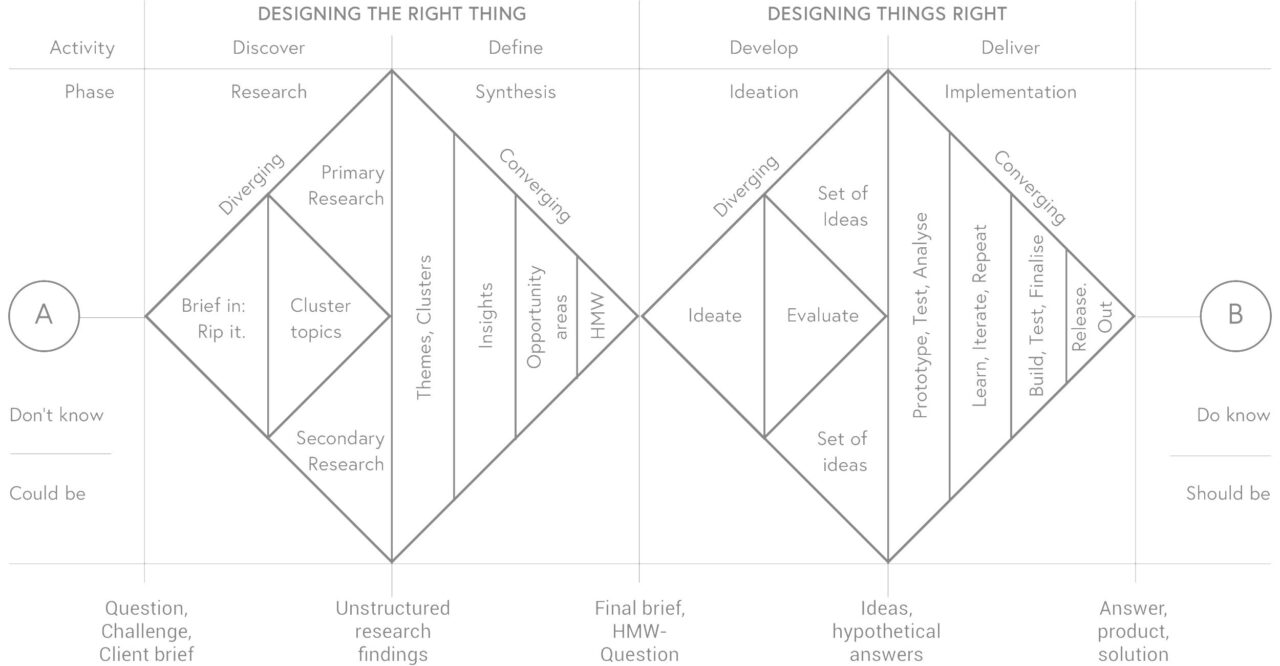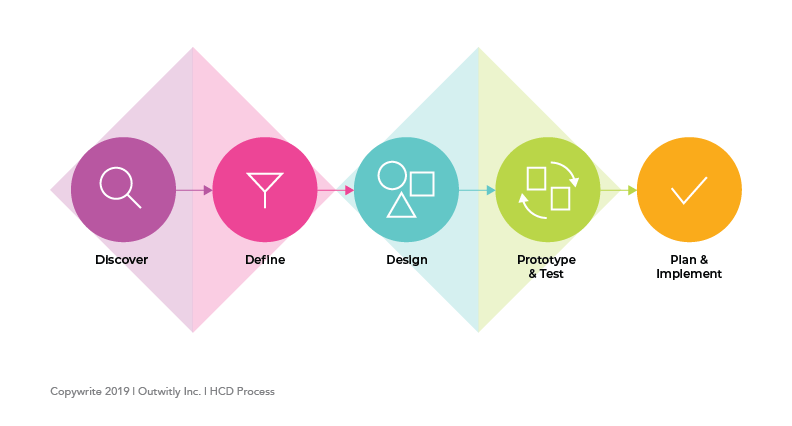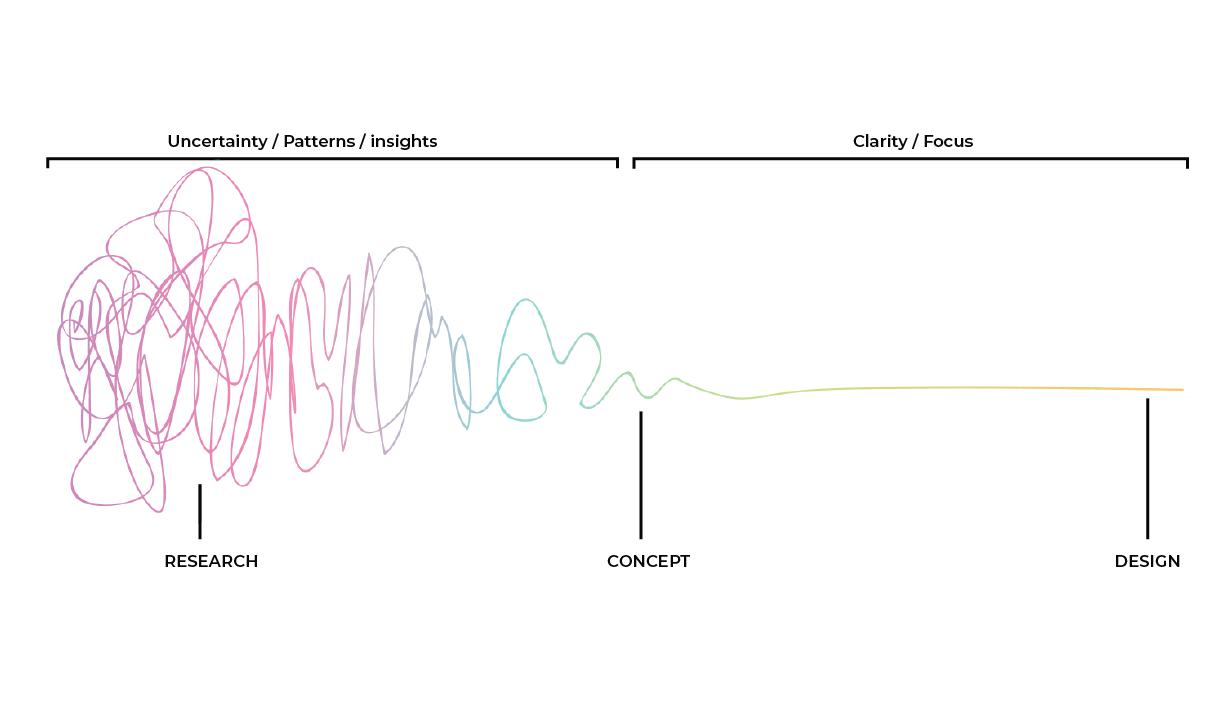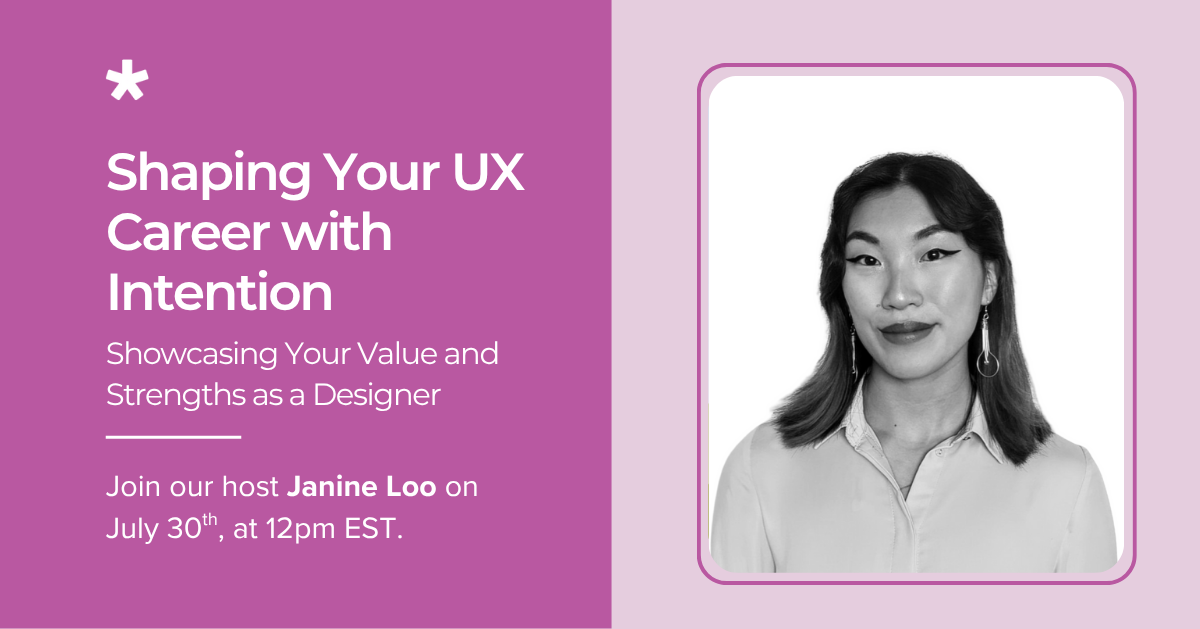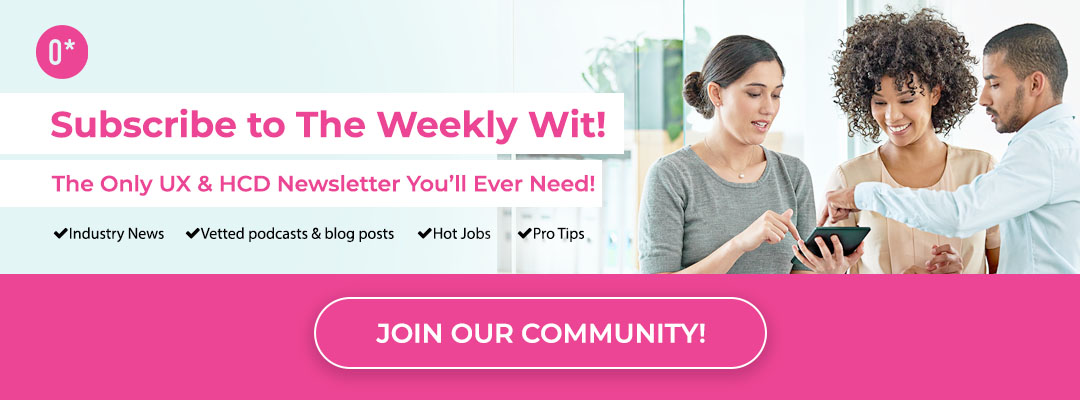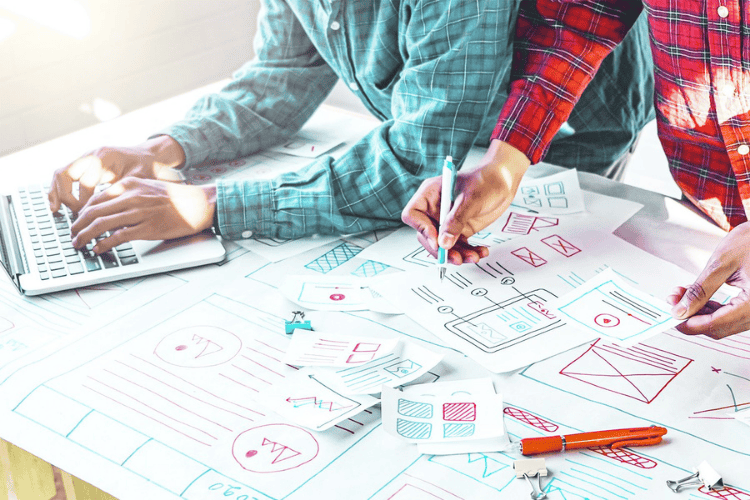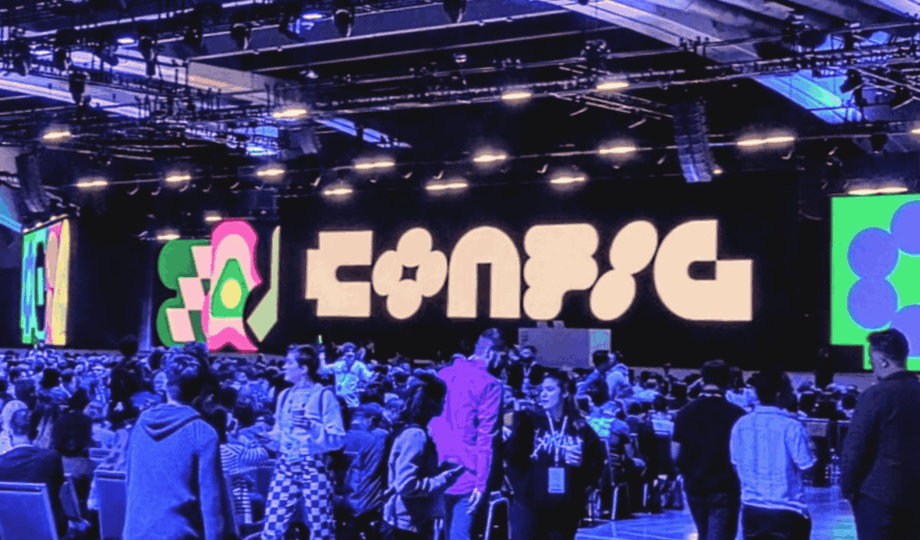The human-centered design (HCD) process is crucial to creating great human experiences for users, customers, and anyone else who interacts with products and services. Everything we encounter on a day-to-day basis is designed, whether consciously or not, but they’re not all designed with humans in mind. It might sound obvious that products and services should be intended for humans, but it’s easy to forget that we aren’t mind-readers, and we need to study our audience to truly understand them.
Let this blog serve as an “FYI” or a reminder about what HCD is and why it’s important! We’ll go through:
- What is human-centered design? / What is the HCD process?
- The human-centered design diagram
- When to use HCD
- How you can apply it in your organization
What does HCD mean?
Human-centered design (HCD) is the process of reimagining a product or service by bringing the needs of the people who use that product or service to the forefront. It’s a design philosophy that helps uncover user needs, behaviours, characteristics, pain points, and motivations through ethnographic research. It leads to the design of better user experiences.
At its core, HCD is:
- A design philosophy (For creating products, services, and experiences)
- Focused on the user (Their needs, behaviours, and challenges)
- Collaborative (Invites users to offer their perspectives on solutions and includes stakeholders in research goal-setting)
- Creative (Leads to novel discovers that spark innovation)
- Multi-disciplinary (Involving people with different perspectives, expertise, and backgrounds)
- Inherently messy (Due to the nature of highly collaborative and complex projects)
The HCD (Human-Centered Design) Process
The HCD process places “humans” (the people who use a product or service) at the center of all design-related activities. It uncovers user needs within a system in order to design better user experiences. Whatever you’re designing, or whatever the experience you’re hoping to design, re-design or improve, the process of human-centered design remains the same.
Human-Centered Design Diagram
The UK Council’s Double Diamond (below) is a great resource for understanding the way that design thinking works in human-centered design. The HCD process is about “diverging” to uncover information and ideas and “converging” to transform data into designs.
This more colourful diagram shows clearly how the five phases of design (followed by Outwitly and originally proposed by the Stanford d.school) can be mapped across this double diamond:
We’ll reference these diagrams as we explain each step of the process in more detail.
Important Note: The process is not necessarily linear. As you move from one phase to the next, you may learn or uncover more that will cause you to move back a stage. But, with every move, you’ll be getting closer to designing an exceptional experience that meets our users’ needs, solves their challenges, and earns you the achievements you’re looking for.
The 5 HCD Steps
As you’ve seen in the colourful diagram above, the HCD process can be broken down into five key steps, or “design phases.”
These are the 5 steps of human-centered design:
- Discover
- Define
- Design
- Prototype & test
- Plan & implement
Let’s dive into each one.
Step 1: Discover
The purpose of the “discover” phase is two-fold:
- To build empathy among team members and stakeholders in relation to the users and customers and what they need
- To uncover insights that will help you and your team to design and improve the product or service experience and identify opportunities to innovate through new products, features or updates
Activities included in the “discover” phase of design are:
- Learning what the project, business, and research goals are (This is sometimes accomplished through kick-off meetings)
- Ramp up! (If you’re a consultant, you’ll need to learn about the subject matter, read previously conducted research, and familiarize yourself with the nature of the product or service)
- Creating a research plan (Including what type of research you’ll conduct, the timing, and the logistics)
- Identifying who you’ll research (Segmenting target user groups, recruiting, scheduling research sessions, and so on)
- Preparing to conduct research (Creating interview protocols and observation guides, etc., and gathering research materials)
- Actually conducting the research (In-depth interviews, observations, diary studies, surveys, etc.)
(Side note: You can get our free “Plan A Stellar User Interview” workbook to help you plan out all of those discovery research logistics!)
The “discover” phase is one of the most challenging stages to get through, but it’s 1000% worth it (that extra zero isn’t a typo). It can take as little as a week or up to several months to complete, depending on the size and budget of the project and how much is already known about the area of study.
It can be difficult to communicate the value of this stage to project stakeholders who may feel they’re already sufficiently familiar with their users/customers. There’s also the uncomfortable (but worthwhile!) nature of the “discovery” phase: because you’re letting user insights lead your design, you’re starting out with very little clarity on what insights you’ll uncover and what path forward will be best. (You’re “diverging.”) This part of the HCD process is called the “fuzzy front end.” The famous design squiggle, depicted below, is a visual demonstration of this early sense of mystery and messy-ness:
Investing time and money into user research before your questions start getting answered can understandably be uncomfortable. However, upfront research yields a much bigger return on investment. Learn more in our blog on why your organization needs HCD.
Step 2: Define
In the “define” phase of the human-centered design process, you’re making sense of the research (converging) by analyzing and synthesizing the gathered data. Essentially, you’re defining the problem or design challenge further, scoping design activities, and aligning the team. You may even create a project roadmap for operationalizing some of the opportunities that you’re uncovering. (You’re “converging,” per the UK Design Council Double Diamond diagram).
Activities included in the “define” phase of design are:
- Analyzing the research (By finding patterns and themes using data triangulation; see the illustration below)
- Synthesizing the research (Using design tools to turn research findings into insights that will inform the product or service design)
- Validating findings (Through workshops with users and stakeholders to make sure that what you originally heard makes sense)
- Reporting and designing artifacts (Including actionable recommendations, opportunities, personas, customer journey maps, service blueprints, etc.)
- Communicating findings (To project stakeholders for their feedback and to utilize their expertise to tease out more design opportunities.)
Step 3: Design
During the “design” phase of HCD (also called the “ideate” phase), you’re “diverging” to collect as many ideas as possible. At this point, you know what you’re designing and why you’re designing it. You have many exciting ideas and insights that will inform our designs from the research.
Your activities in this phase could differ a lot depending on the type of product, service, or experience you’re designing.
- In the case of UX design, you would start by moving into rough wireframe sketches (analog or digital)
- If you’re designing a physical product, you would be sketching out ideas for its function and look
- If you’re designing a service, you might be hosting a workshop to co-create a solution for the service
At first, you’re looking for quantity over quality in your ideas. Then, as you move further down the design cycle, you’ll refine concepts until you arrive at your final design. You might remember that earlier, we said that the phases of design aren’t linear. Well, the “design” phase often runs in parallel with the “prototype & test” phase. Ideally, you would be prototyping your ideas with users as you move from rough to higher-fidelity concepts. This helps you validate the concepts and ensure you’re actually meeting user needs, as well as what to improve if you’re not quite there yet.
After each testing session or rapid prototyping workshop, you should have more clarity on the direction of your design. This is a very exciting time for stakeholders, where they’re rewarded for hanging on through the discomfort of that “fuzzy front end” of HCD in the “discover” phase.
Step 4: Prototype & test
In this phase, you’re moving from low-fidelity to high-fidelity prototypes of your designs for testing. You’re conducting tests with human users who interact with the system you’ve prototyped and getting their feedback.
Activities that might be included in your “prototype and test” phase of design are:
- Piloting (Testing a product or service with real users in real conditions)
- Usability testing (Evaluating product’s ease of use with target users)
- Concept walkthroughs (Presenting ideas to stakeholders for feedback and refinement)
- Rapid prototyping (Quickly creating low-fidelity prototypes to test ideas)
- Service staging Simulating the process of a service to identify potential problems and improvements)
- Experience prototyping (Creating interactive prototypes to simulate user experiences)
Step 5: Plan & Implement
The final step in the human-centered design process involves creating a plan for the implementation of the final design.
Activities for the “plan and implement” phase might include:
- Creating a project roadmap
- Moving onto software development (In the case of a digital product/service)
- Moving into product development (In the case of a physical product)
All collaborators involved in this phase should be involved throughout the entire process, beginning in the “discover” phase. They need to understand who you’re researching, understand why you’re conducting research, and become familiar with the research insights, so they have the chance to ask questions and offer input that may impact implementation. By including stakeholders throughout the entire project, you enable them to become champions of the human-centered design process.
When to Use HCD
HCD methodologies and principles can be useful in so many scenarios. This includes organizations that are:
- B2B or B2C product or service-based (Chances are you can use human-centered design to improve your customer experience, no matter what your product or service is)
- In desperate need of an internal culture overhaul (You need to improve employee experience from the moment they onboard)
- In the health or public sectors (For example, consider the hospital emergency room experience as a service, and consider what could be improved. Many HCD projects have been conducted in the health care sector.)
- Offering a government service (Like hydroelectricity services, immigration services, and so on)
Honestly, with HCD, the possibilities are endless!
What is an example of HCD in the real world?
Human-centered design is a philosophy that can be applied to many different types of design in the real world, including:
- Service design
- UX design
- Business design (Employee experience, process inefficiencies, etc.)
- Product design
- Experience design
HCD in Service Design
In the case of service design, we’re referring to any type of service offered to customers or clients. It could be a banking service, a phone/internet service, a government service (like getting your driver’s license), and so on. In most cases, service design involves multiple touchpoints, such as a website, an in-store experience, a customer support line, etc.
For example, Outwitly undertook a human-centered design project to reimagine adult education and the educational programs offered by a provincial government.
HCD in UX Design
In the case of UX design, if you have a software product like a mobile or web application, you can use HCD to uncover user needs, the components that should actually be involved in the application, and what features might be needed.
HCD in Business Design
Business design might look at redesigning employee experiences and company culture, or it might investigate siloed, inefficient processes that touch many different departments.
Ways to Start Practicing Human-Centered Design
If the HCD process is new to you, here are a list of starter steps that we recommend trying out:
- Plan to conduct a set of in-depth interviews with 12 of your users
- Download our free Stellar User Interview Workbook to help you with your interviews
- Step into your users’ shoes! Spend a day shadowing your users as they interact with your product or service
- Host a “lunch and learn” to educate your team about HCD
- Contact us to start your next HCD project 😉
Other HCD resources we like…
- The free Building a Lasting Vision ebook — build “North Star” guiding principles!
- IDEO’s Human-Centered Design Toolkit (Download a PDF here.)
- UK Design Council’s Double Diamond
- The Design Squiggle
- Stanford d.school’s Getting Started with Design Thinking
We hope this post gave you the answers you were looking for! If you stayed with us through the whole thing, we bet you’d love our weekly newsletter. Join thousands of subscribers who’re staying in the know about the latest HCD tips:

